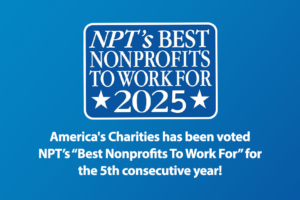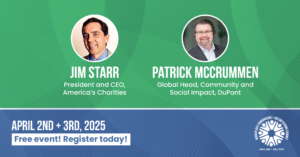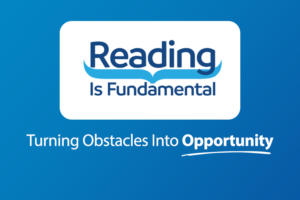Sarah Ford | August 18, 2014
Childhood Cancer Survivor Uses Research & Writing Experience to Advocate for Children With Cancer
Childhood cancer remains the leading cause of death by disease among children in the United States. Every day, 42 children are diagnosed with cancer and the average age of diagnosis is 6.
From funding groundbreaking research to find cures for childhood cancer, to financially supporting clicnical trials, to providing educational resources so no child faces diagnosis without a fully equipped support team, CureSearch for Children’s Cancer is working to accelerate the cure for children’s cancer by driving innovation, eliminating research barriers and solving the field’s most challenging problems. In this Q&A, Tania Lown-Hecht, CureSearch for Children’s Cancer Research and Program Managers, shares her role and experience executing CureSearch’s mission.
Q&A With Tania Lown-Hecht:
What attracted you to this job & particular cause?
I am a childhood cancer survivor and a former academic researcher so my work for CureSearch combines my personal commitment to advocating for children with cancer and my experience as a researcher and writer.
Walk us through a “typical” day in your shoes. How are you making an impact through your work?
My days vary depending on the project in front of me. Lately, a typical day involves spending my morning coordinating with CureSearch’s Scientific Review Committee (we are currently reviewing grants for our Young Investigator Awards that provide funding to young researchers studying children’s cancer). In the afternoon, I’ve been splitting my time between communications projects, like translating our researchers’ progress reports into plain language for our families, and managing other educational projects, like a series of webinars CureSearch is producing for school personnel. Every day, I feel like my job makes an impact. I ensure that researchers have the funds they need to undertake cancer research, I help shape the priorities about what research we will fund, and I translate all these projects into interactive reports so that families, children, and generous contributors to CureSearch can feel the impact of their contributions.
What do you find most rewarding about your job at the end of the day?
Working for a nonprofit is extremely rewarding because our number one priority is to make a difference for children and families facing a cancer diagnosis. In this vein, I love getting letters from our researchers and hospitals telling us about how much CureSearch matters for accelerating their work. It really makes me understand the impact of CureSearch on the future of children’s cancer treatment.
If you had a list of ‘best-kept secrets’ or advice you’d give to anyone with a similar position, what would it be and why?
I am constantly learning and this really helps me take on all the new challenges of my position, where I can do a little bit of everything (and love it!). I use Google alerts and read a few scientific publications to stay on top of the trends about children’s cancer. I also get a lot of ideas from industry webinars and publications, everything from the Foundation Directory to the FasterCures Institute. I also try to take a little time every week to see what other nonprofits are doing and get inspiration about how they relate to their constituents and report on their programs. I also find it useful to schedule a little bit of creative time every week, so that I can always be reassessing how to do things better.
Looking out 3 to 5 years, beyond the obvious trends, what do you think will be the next big change in your industry?
For healthcare nonprofits, I think that changes to NIH and to government funding are going to radically change the role of our industry in accelerating medical research. My hope is that disease-area nonprofits will have a big role in how investors, researchers, and philanthropists think about medical research and that we can use the changing industry to fuel positive change that will impact families facing cancer.
Our thanks to Tania Lown-Hecht for sharing her time and expertise with us! To learn more about the impact Tania’s organization is making, visit their website at www.CureSearch.org and connect with them on Facebook, Twitter, Pinterest, LinkedIn, YouTube, and sign up for their newsletter. Click here to support their work with a donation.
The primary goal for any nonprofit is to get people to support that nonprofit’s cause so they can make an impact. But, behind each of those causes are hard-working individuals, actively involved in making that impact happen. Through our Making Impact Blog Series, we’re going behind the scenes with America’s Charities member organizations to learn how they’re making impact happen and share insights and advice from the staff and volunteers supporting these initiatives.
Get Resources and Insights Straight To Your Inbox
Explore More Articles
For Fifth Consecutive Year America’s Charities Named ‘Best Nonprofit To Work For’
Washington, D.C. – April 1, 2025 – America’s Charities, the nonprofit that mobilizes the power of giving as a leading provider of volunteering, workplace giving,…
Read ArticleWorkplace Fundraising + Volunteering Summit (April 2nd and 3rd, 2025)
Join us in attending this virtual summit! The America’s Charities team is joining up with other leading voices in the workplace giving space for a…
Read ArticleThe Time to Act is Now
The results of the 2024 National Assessment of Educational Progress (NAEP) are in, and the findings are, in a word, heartbreaking. This assessment serves as…
Read ArticleGet Resources and Insights Straight To Your Inbox
Receive our monthly/bi-monthly newsletter filled with information about causes, nonprofit impact, and topics important for corporate social responsibility and employee engagement professionals, including disaster response, workplace giving, matching gifts, employee assistance funds, volunteering, scholarship award program management, grantmaking, and other philanthropic initiatives.




